#eleanor of provence
Explore tagged Tumblr posts
Text
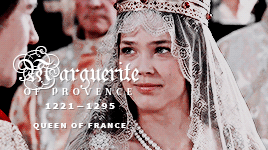

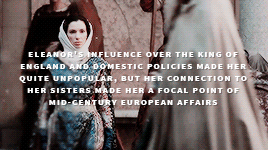

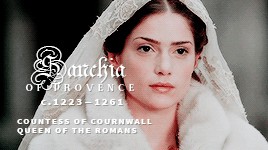


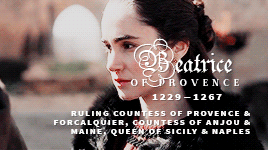
historical sisters (1/∞)
— Marguerite, Eleanor, Sanchia and Beatrice of Provence
Four sisters who had risen from near obscurity to become the most celebrated and powerful women of their time. Almost nothing of significance that occurred in Western Europe during the period in which they lived was not influenced by the actions of their family. It is impossible to fully understand the underlying political motivations of the thirteenth century without them. — Nancy Goldstone, Four Queens: The Provencal Sisters Who Ruled Europe
#historyedit#marguerite of provence#eleanor of provence#sanchia of provence#beatrice of provence#13th century#mine#*#*hsisters
274 notes
·
View notes
Note
Since you also like the Plantagenets, what's your thoughts on Eleanor of Provence? She seems interesting but I don't see a ton of people discussing her a lot
to be clear: i am not interested in the plantagenets in the slightest; i like the angevins (@baublecoded), within which henry iii is sort of nebulous. and i have read david carpenter’s books on henry iii — but years ago, and at the moment they are with my boyfriend, so i haven’t checked details on her in a while. so, as a result, henry (and therefore eleanor) is a bit of a weak spot, for me!
but she is fascinating to me — a (violently, it seems) hated queen, with a reputation for being intelligent and romantic, fashionable and dedicated to her obligations as queen — if only people keep in mind her uglier traits. accusations of fiscal tyranny are, perhaps, dubious on account of misogyny, but her hostility to judaism and the violence and expulsion of jews from her dower lands should not be dismissed.
5 notes
·
View notes
Note
I want to ask, what was Henry III and Eleanor of Provence's marriage like?
Anon, I don’t know much about Henry III, Eleanor of Provence, or 13th century England in general, so I’m not the best person to ask. I would also recommend that you read Margaret Howell's biography Eleanor of Provence: Queenship in the Thirteenth-Century England as well as J.L. Wilkinson's chapter "Eleanor of Provence: Caring Consort and Controversial Queen" in Routledge's Early Norman to Plantagenet Consorts, as most of my information in this answer has been taken from these sources.
From what I understand, their marriage seems to have been generally loving and successful. Eleanor was very young when she arrived in England in 1236 (probably around 12) but they seem to have waited for a few years before trying to conceive a child, as their son Edward I was born in 1239. According to Wilkinson, not only was Eleanor was "lavished with attention by her husband", she was also very influential with him. The couple seems to have truly enjoyed each other's company: an assassination attempt on Henry in September 1238 was foiled because he was not in his chambers but was instead spending time with his wife. Their closeness is also demonstrated through their letters, which were "littered with terms of affection and endearment".
They were also loving parents who seem to have invested a lot of personal time and attention to their children. Their reaction to their son Edward's illness as well as their daughter Margaret's isolation in Scotland indicates that they genuinely cared for their children's wellbeing. This was not one-sided - later, Margaret stayed in England during the last stages of her pregnancy in 1261 so she could be near her mother when giving birth; and Beatrice placed some of her own children under her mother's care when she accompanied her husband John de Dreux on a crusade. On the flip side, their relationship with their son Edward seems to have been far more complex and occasionally strained, although they do seem to have ultimately cared for each other*.
But I wouldn't say the marriage was all sunshine and rainbows. In particular, there were a few specific incidents which painted Henry III in a less-than-tasteful light. In 1251, the chronicler Matthew Paris recorded how Henry once annulled Eleanor's presentation of her chaplain William of London to Flamstead, and dismissed him from her household. Matthew Paris described how Henry III, "glowing with anger", lashed out at Eleanor with what her biographer Margaret Howell describes as both a taunt and a threat: "How high does the arrogance of woman rise if it is not restrained?". This seems to have resulted in deep consternation on Eleanor's part.
There may have been lingering anger on Henry's part from this incident, suggested by his furious imprisonment of Eleanor's clerk, Robert del Ho, on a charge of corruption on 28 October 1252, when he was attending to Eleanor's business.
More troubling was yet another disagreement between them in 1252. To quote Wilkinson:
"The couple became embroiled in a more serious dispute in 1252, between the Queen’s uncle Boniface and Henry III’s half-brother Aymer de Lusignan, bishop-elect of Winchester, over whose right it was to elect the next prior of St. Thomas’s, Southwark; the disagreement turned violent and culminated in the Lusignans’ men sacking Boniface’s manor at Maidstone. Eleanor’s support for her kin backfred, when Henry III “turned on the queen” in November, seized her properties and sent her away from court for a brief spell."
The situation got so bad for Eleanor that she had to send twice to the court for money for her expenses. Fortunately, matters were soon patched up between the couple: Henry returned Eleanor’s lands and presumably queen's gold to her on 27 November, and the both of them subsequently devoted their efforts to reconciling Boniface and William.
I don't want to overemphasize these incidents, but I do want to be clear: these are examples of Henry III using his patriarchal power as husband to punish his wife for displeasing him. It is also an example of the king blatantly disrespecting the dignity of his queen. There could have been other incidents like this which weren't recorded; we don't know. That being said, the speed at which they reconciled is perhaps indicative of the strength of their relationship. It's also clear, from future events, that neither Eleanor's influence nor her political prominence were affected in the slightest.
Howell speculates that these quarrels coincided with Eleanor's emergence as a more independent and assertive political actor:
"The king's anger was understandable. The young girl whom he had fashioned as his queen, the supportive wife, the mother of his children, in whose companionship he had such pleasure, were images familiar and dear to him. Now, in her late twenties, and without rejecting her established role, Eleanor of Provence was pressing beyond it to an image of her own making. Yet it would be mistaken to think that she was adopting an attitude of defiance. This was not Eleanor's way, and she knew that a queen should be seen to be a peacemaker [...] As queens consort, Eleanor of Aquitaine and Isabella of France were politically important because they threw over the bonds of loyalty to their husbands. Eleanor of Provence set herself to work within those bonds; personal loyalty was one of her most deeply held values. Within those constraints she pushed queenship to its political limits."
Yet it seems that, despite Henry's possible initial friction with the role Eleanor was adopting for herself, he embraced and actively promoted it. When comparing Henry III and his son Edward I's attitudes to their wives in a political capacity, Howell observed:
"Edward revered his mother [Eleanor of Provence], appreciated her courage and knew that he and his father had been saved in part by her indomitable energy and commitment. This is true and he never forgot his debt. It is also true that he would never have tolerated queenship of this style in his own wife [Eleanor of Castile]. It was Henry III who made possible the queenship of Eleanor of Provence. This should not be attributed simply to Henry's alleged weakness, but to the fact that Henry recognized in his own wife what Louis IX recognized in his mother - an exceptionally able woman, in whom he had a deep basic trust."
Indeed, we know they were mutually supportive of each other on a political level. Henry formally appointed Eleanor as regent of England during his absence in 1253-54. Her brother-in-law Richard of Cornwall was instructed to give her "counsel", but it's clear that Eleanor was meant to be the dominant figure in governance. Henry also named Eleanor as the keeper of their children, the English realm, and all his "other lands" (Gascony, Ireland, Wales) if he should die during Prince Edward's minority. It's important to keep in mind that this level of political authority (ie: positions beyond their queenship) was something late medieval kings after Henry III almost never gave their wives. It's even more striking in the light of Eleanor's predecessors, Berengaria of Navarre and Isabella of Angouleme, having comparatively constrained queenships, as well as the fact that Eleanor's own sister Marguerite had a very diminished position in the French court. The authority Henry bestowed on Eleanor, then, says less about the requirements of queenship and more about the strength of their relationship, indicating Henry's high level of trust and regard for his wife's capabilities.
Henry's trust in Eleanor was well-founded. She acted as his "trusted counsellor, helpmeet and adviser", supported him in his foreign policy initiatives, and accompanied him to Gascony in 1242-43. In the 1250s, Eleanor also emerged as one of the strongest and most steadfast enemies of the reformers and remained intent on preserving her husband's authority as king. According to the Waverly Abbey annalist, she was the one who persuaded Henry to take back his earlier acceptance of the Provisions of Oxford. After Henry had submitted to the barons in 1263, Eleanor departed for France and attempted to rally international support for her husband's regime, successfully persuading Louis to issue the Mise of Amiens, in favour of Henry. After her husband and eldest son were defeated and captured by the rebels in 1264, Eleanor remained overseas to keep the king's cause alive and publicized: she oversaw Gascon affairs, amassed funds, gathered mercenaries and raised a fleet in the hopes to launch an invasion of England**. Although lack of funds somewhat impeded her efforts, Eleanor did eventually succeed in her goal:
"It was, ultimately, ��from a port under Queen Eleanor’s control,” that men were provided to assist William de Valence in making a royalist landing in England, which eventually culminated in a dramatic resurgence in royalist fortunes in the summer of 1265; Edward’s escape from Montfortian custody at Hereford in late May helped to pave the way for his dramatic victory at the Battle of Evesham on 4 August and Henry III’s liberation from Montfortian custody."
Henry and Eleanor reunited, and seem to have successfully re-established order within the next few years, so that when Henry died in 1272, their son Edward was able to peacefully ascend to the throne. As queen dowager, Eleanor made appropriate provisions for her husband's soul and re-founded the hospital of St. Katherine for his commemoration. She may have possibly kept Henry's heart with her for a few years, since it only reached its final resting place at Fontevraud in 1292. If true, this seems to a poignant indication of her grief.
*In the 1250s, Edward had begun to “carve out more independence from his parents’ influence” and “forge a wider circle of contacts that took him beyond the officials whom his parents had appointed to serve him.” Later, he temporarily voiced support for the reform movement and Simon de Montfort in 1259, against the interests of both his parents. However, Henry and Eleanor quickly reconciled with their son after they returned to England. “Although the relationship between Henry, Eleanor and Edward continued to waiver for a time, Edward supported his parents when it mattered the most." But there were additional complications during Eleanor's tenure as dowager queen. According to Wilkinson, "Edward I was not always mindful of his mother’s wishes, conscious, perhaps, of the controversial figure she had cut during his father’s reign". But she still had influence with her son. Among other things, we know that Edward and Eleanor of Castile's daughter Mary had entered into Amesbury "at the instance of the King’s mother" according to the Dominican friar Nicholas Trivet, and "for the solace of the queen-mother" according to Margaret, abbess of Fontevraud.
**I’ve always found it very frustrating that only Matilda of Boulogne and Margaret of Anjou are usually given credit for supporting their husbands in such a way when Eleanor of Provence did the same thing and was (imho) far more successful in both the short-term and long-term.
2 notes
·
View notes
Text
"However, the same ties that bound most royal women together, also set them apart from Mary. The disparity cannot have escaped the regular acknowledgment of the nun, for whom daily life centered around one constant home, whose life could never involve children or husbands, and whose travel was necessarily limited. If the gulf between their experiences occasionally made Mary feel isolated from her sisters and other relatives, the feeling was never so great that the nun refused an invitation to join court and renew her association as an intimate member of the royal family. Perhaps she felt her position, free as it was from the usual expectations on royal women, was the more desirable one - certainly she never sought out opportunities, which would have been open to her, to embrace the challenge of life in a foreign land and transfer to Fontevrault, as her grandmother had intended."
Daughters of Chivalry: The Forgotten Princesses of King Edward Longshanks, Kelcey Wilson-Lee
4 notes
·
View notes
Text

11 notes
·
View notes
Text
A BOOK ON PLANTAGENET QUEENS-BUT WHERE IS ANNE?
A review of Plantagenet Queens and Consorts by Steven J. Corvi I am always partial to a good book on medieval English Queens. History being what it is, these women often get overlooked and sidelined unless they did something that was, usually, regarded as greedy, grasping or immoral. Therefore when I saw Steven J. Corvi’s book ‘Plantagenet Queens and Consorts’ I thought that sounded right up…
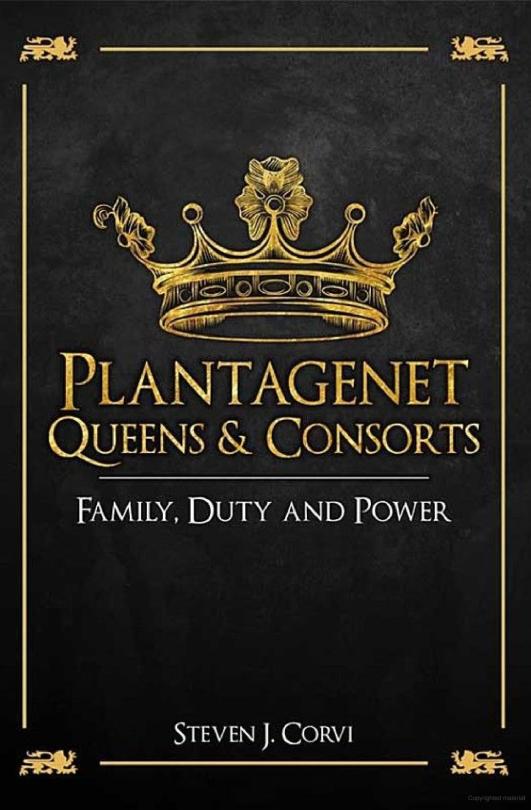
View On WordPress
#"Beauforts"#"Lambert Simnel"#"Tudor" rebellions#"Tudors"#Anne Neville#Anne of Bohemia#Bermondsey Abbey#Eleanor of Aquitaine#Eleanor of Castile#Eleanor of Provence#Elizabeth of York#Henry III#Henry VII#House of York#Joan of Kent#Joan of Navarre#John of Gaunt#Katherine de Roet#Lady Eleanor Talbot#Marguerite of France#Plantagenet Queens and Consorts#pre-contract#Richard II#Richard III
2 notes
·
View notes
Text


Favourite Plantagenet queens: Aliénor de Provence (1223-1291) (1/5)
#plantagenet dynasty#Eleanor of Provence#Aliénore de Provence#Henry III#Henry III of England#medieval England
1 note
·
View note
Text
#random wikipedia articles#wikipedia#Eleanor of Provence#english history#queen of england#queen consort#was Queen regent in 1253 during her husbands absence#very unpopular to Londoners#born 1223#died 1291#husband was King Henry III#skilled poet#fashion leader#had 5 kids#became a nun in 1287#was anti-Semitic#expelled Jewish people so she it’s justified that she was hated#only English Queen with an unmarked grave
0 notes
Text
ELEANOR OF PROVENCE // QUEEN OF ENGLAND
“She was a Provençal noblewoman who became Queen of England as the wife of King Henry III from 1236 until his death in 1272. She served as regent of England during the absence of her spouse in France in 1253. Although she was completely devoted to her husband and staunchly defended him against the rebel Simon de Montfort, 6th Earl of Leicester, she was very much hated by the Londoners. This was because she had brought many relatives with her to England in her retinue; these were known as "the Savoyards", and they were given influential positions in the government and realm. On one occasion, Eleanor's barge was attacked by angry Londoners who pelted her with stones, mud, pieces of paving, rotten eggs and vegetables. Eleanor had five children, including the future King Edward I of England. She also was renowned for her cleverness, skill at writing poetry, and as a leader of fashion.”


0 notes
Note
How do we know that COA was offered her daughter made bona fides and kept princess? When was this?
It was an offer made by Henry alongside Campeggio when he was there before the trial, that her acceptance of the offer meant the trial could be foregone ....
We (Wolsey and Campeggio) are agreed in opinion to test the mind of the Queen, and to persuade her to consent to the separation, and to enter the profession of some religion. For this purpose his Lordship promised me the assistance of himself and all the prelates of the kingdom, and the favor of the King, and that the Queen shall have any honorable conditions which she demands, retain her station as Queen*, and not lose anything except "l'uso della persona del Re," which he (Wolsey) says she has lost for many years; allowing her her dowry, rents, ornaments, and assignments for her support, and many other things; especially that the succession of the kingdom for the present shall be established in her daughter, by the ordinance and consent of all the estates, in case there should never be any legitimate male heir.
....(although, actually I don't exactly remember, that might have just been one stage of the offer...another might have been that her absence from the trial would ensure a result in Henry's favor; as we know she refused to attend after her speech and it did not, so whether or not that was true...Campeggio had a decretal comission to declare the marriage valid or invalid at Blackfriars and didn't, so in some sense they both got played, although Catherine only in hindsight...ironically, she would later vehemently complain about the severe injustice of the delay in any resolution, but she was the one that had interceded for that delay**, demanding the case only be tried in Rome). Even her counsel at the time, before becoming as contumacious as he did (Bishop Fisher), advised her to take this 'deal', as it were. Off the cuff, I don't remember every reference made to it, Chapuys some months later does also mention (very conditional) 'offers' made to her, but the dispatch is frustratingly vague:
Meanwhile the Queen is daily assailed by people making her all manner of offers, if she will only consent to the divorce; but she remains as firm as ever [...]
In 1533 Chapuys reports Catherine as having said she was willing to take the 'offer' made to her by the King's council three years ago, that then she had thought it was a feint to induce her to accept demotion, but she would accept it now. He does not specify what this offer was, I remember I went back to the sources of when Henry's council visited and argued with her and it was not clear then, either, but I always wondered if that was what she was alluding to. If so it was too late at that point; Henry had decided that the issue of any union that contravened divine law was irrevocably illegitimate (although technically, he would not manage to garner Parliamentary assent for this notion until three years later, he only managed it by implication in 1534), and he believed that was what it was.
Often apologia of Catherine's stance in the late 1520s has been, why should she have even considered that inducement, how was it even presented as an 'offer', even if the papacy had annulled the marriage, Mary would be bona fides regardless, etc. It was presented as an offer, inducement, compromise of sorts because in England that was not the legal precedent (ie, an offer made on behalf of her daughter that was not guaranteed otherwise):
"[Henry VIII] now argued she would would be barred by illegitimacy. This contention puzzled continental contemporaries because elsewhere in western Europe those children born to couples who in good faith believed themselves validly married were treated as legitimate. Nevertheless, Henry was right. After a period of some uncertainty, by the late fourteenth century England had opted out of the bona fides principle. As Sir John Baker notes, 'succession problems were usually debated in legal terms and in accordance with the common law canons of inheritance.' A successful challenge to his marriage would thus automatically bastardise Mary and leave Henry no direct heir... [although] Mary could have been legitimated by statute." - JF Hadwin, The Journal of Ecclesiastical History
*One assumes this meant only a ceremonial title of some sort, ie Dowager Queen of England, as her sister-in-law was still referred to as Queen of France.
**Probably not anticipating resolution would not take place for another four years, but...still.
#anon#so...i think the answer has to be that catherine believed she would win#and she was vindicated although this was something of a pyrrhic victory for her own lifetime#and beyond it if we are considering 1536-52#or maybe she was not aware of this precedent which doesn't speak very highly of her advisors#her stans kind of want it both ways in a lot of aspects of the GM which is sort of like...#well either she was ignorant of certain things or knew them and decided to take the gamble#which presents a bit of an either/or with the Genius of the Tudor Court versus Devoted Mother Above All except for them it has to be both#the pragmatic solution would have been to put henry to oath with witnesses that mary would be first in succession after any sons#by subsequent marriage... in exchange for her agreement#to either enter convent (although as the article i quoted argues that wouldn't have really been an entire solution in and of itself) or#to tell charles v not to interfere and let the matter run its course in the courts#that is of course something of a secular perspective but isn't that the win win? if you win then great she's ahead of everyone#if you don't at least there's the chance for the throne#this was basically what did end up happening with the caveat that she was still illegitimate but at that point it had nothing to do w/ coa#more like in spite of her#royal retirement also /= an admission of sin; people seem to have really minimal historic literacy on this subject...#charles v retired to a monastery in 1556.#although traditionally it was for royal widows#(catherine of valois; eleanor of provence; elizabeth woodville...)#there might have been the crux of her moral opposition.#henry insisted she was arthur's widow; catherine insisted she was not
9 notes
·
View notes
Text
no one is more annoying than me when it comes to people being blatantly wrong about history bc i just saw a video saying Anne of Cleves was Henry THE THIRD'S ugliest wife and then proceeded to show portraits of SYBIL OF CLEVES AND JANE SEYMOUR. You bet my ass was spamming my friends over it. How dare anybody be publically wrong ever
#Henry the third's ugliest wife......#Girl who??? Eleanor of Provence??? Cause that's the only wife of Henry III that I know of!#Did they forget to add the V in VIII. Who knows. Pmo#also how do you make videos about the wives of henry viii and then mix up the portraits of the wives like. Jeremy. Jeremy you had one job#Im being salty for no reason excuse me
0 notes
Text
Below the cut I have made a list of each English and British monarch, the age of their mothers at their births, and which number pregnancy they were the result of. Particularly before the early modern era, the perception of Queens and childbearing is quite skewed, which prompted me to make this list. I started with William I as the Anglo-Saxon kings didn’t have enough information for this list.
House of Normandy
William I (b. c.1028)
Son of Herleva (b. c.1003)
First pregnancy.
Approx age 25 at birth.
William II (b. c.1057/60)
Son of Matilda of Flanders (b. c.1031)
Third pregnancy at minimum, although exact birth order is unclear.
Approx age 26/29 at birth.
Henry I (b. c.1068)
Son of Matilda of Flanders (b. c.1031)
Fourth pregnancy at minimum, more likely eighth or ninth, although exact birth order is unclear.
Approx age 37 at birth.
Matilda (b. 7 Feb 1102)
Daughter of Matilda of Scotland (b. c.1080)
First pregnancy, possibly second.
Approx age 22 at birth.
Stephen (b. c.1092/6)
Son of Adela of Normandy (b. c.1067)
Fifth pregnancy, although exact birth order is uncertain.
Approx age 25/29 at birth.
Henry II (b. 5 Mar 1133)
Son of Empress Matilda (b. 7 Feb 1102)
First pregnancy.
Age 31 at birth.
Richard I (b. 8 Sep 1157)
Son of Eleanor of Aquitaine (b. c.1122)
Sixth pregnancy.
Approx age 35 at birth.
John (b. 24 Dec 1166)
Son of Eleanor of Aquitaine (b. c.1122)
Tenth pregnancy.
Approx age 44 at birth.
House of Plantagenet
Henry III (b. 1 Oct 1207)
Son of Isabella of Angoulême (b. c.1186/88)
First pregnancy.
Approx age 19/21 at birth.
Edward I (b. 17 Jun 1239)
Son of Eleanor of Provence (b. c.1223)
First pregnancy.
Age approx 16 at birth.
Edward II (b. 25 Apr 1284)
Son of Eleanor of Castile (b. c.1241)
Sixteenth pregnancy.
Approx age 43 at birth.
Edward III (b. 13 Nov 1312)
Son of Isabella of France (b. c.1295)
First pregnancy.
Approx age 17 at birth.
Richard II (b. 6 Jan 1367)
Son of Joan of Kent (b. 29 Sep 1326/7)
Seventh pregnancy.
Approx age 39/40 at birth.
House of Lancaster
Henry IV (b. c.Apr 1367)
Son of Blanche of Lancaster (b. 25 Mar 1342)
Sixth pregnancy.
Approx age 25 at birth.
Henry V (b. 16 Sep 1386)
Son of Mary de Bohun (b. c.1369/70)
First pregnancy.
Approx age 16/17 at birth.
Henry VI (b. 6 Dec 1421)
Son of Catherine of Valois (b. 27 Oct 1401)
First pregnancy.
Age 20 at birth.
House of York
Edward IV (b. 28 Apr 1442)
Son of Cecily Neville (b. 3 May 1415)
Third pregnancy.
Age 26 at birth.
Edward V (b. 2 Nov 1470)
Son of Elizabeth Woodville (b. c.1437)
Sixth pregnancy.
Approx age 33 at birth.
Richard III (b. 2 Oct 1452)
Son of Cecily Neville (b. 3 May 1415)
Eleventh pregnancy.
Age 37 at birth.
House of Tudor
Henry VII (b. 28 Jan 1457)
Son of Margaret Beaufort (b. 31 May 1443)
First pregnancy.
Age 13 at birth.
Henry VIII (b. 28 Jun 1491)
Son of Elizabeth of York (b. 11 Feb 1466)
Third pregnancy.
Age 25 at birth.
Edward VI (b. 12 Oct 1537)
Son of Jane Seymour (b. c.1509)
First pregnancy.
Approx age 28 at birth.
Jane (b. c.1537)
Daughter of Frances Brandon (b. 16 Jul 1517)
Third pregnancy.
Approx age 20 at birth.
Mary I (b. 18 Feb 1516)
Daughter of Catherine of Aragon (b. 16 Dec 1485)
Fifth pregnancy.
Age 30 at birth.
Elizabeth I (b. 7 Sep 1533)
Daughter of Anne Boleyn (b. c.1501/7)
First pregnancy.
Approx age 26/32 at birth.
House of Stuart
James I (b. 19 Jun 1566)
Son of Mary I of Scotland (b. 8 Dec 1542)
First pregnancy.
Age 23 at birth.
Charles I (b. 19 Nov 1600)
Son of Anne of Denmark (b. 12 Dec 1574)
Fifth pregnancy.
Age 25 at birth.
Charles II (b. 29 May 1630)
Son of Henrietta Maria of France (b. 25 Nov 1609)
Second pregnancy.
Age 20 at birth.
James II (14 Oct 1633)
Son of Henrietta Maria of France (b. 25 Nov 1609)
Fourth pregnancy.
Age 23 at birth.
William III (b. 4 Nov 1650)
Son of Mary, Princess Royal (b. 4 Nov 1631)
Second pregnancy.
Age 19 at birth.
Mary II (b. 30 Apr 1662)
Daughter of Anne Hyde (b. 12 Mar 1637)
Second pregnancy.
Age 25 at birth.
Anne (b. 6 Feb 1665)
Daughter of Anne Hyde (b. 12 Mar 1637)
Fourth pregnancy.
Age 27 at birth.
House of Hanover
George I (b. 28 May 1660)
Son of Sophia of the Palatinate (b. 14 Oct 1630)
First pregnancy.
Age 30 at birth.
George II (b. 9 Nov 1683)
Son of Sophia Dorothea of Celle (b. 15 Sep 1666)
First pregnancy.
Age 17 at birth.
George III (b. 4 Jun 1738)
Son of Augusta of Saxe-Gotha (b. 30 Nov 1719)
Second pregnancy.
Age 18 at birth.
George IV (b. 12 Aug 1762)
Son of Charlotte of Mecklenburg-Strelitz (b. 19 May 1744)
First pregnancy.
Age 18 at birth.
William IV (b. 21 Aug 1765)
Son of Charlotte of Mecklenburg-Strelitz (b. 19 May 1744)
Third pregnancy.
Age 21 at birth.
Victoria (b. 24 May 1819)
Daughter of Victoria of Saxe-Coburg-Saafield (b. 17 Aug 1786)
Third pregnancy.
Age 32 at birth.
Edward VII (b. 9 Nov 1841)
Daughter of Victoria of the United Kingdom (b. 24 May 1819)
Second pregnancy.
Age 22 at birth.
House of Windsor
George V (b. 3 Jun 1865)
Son of Alexandra of Denmark (b. 1 Dec 1844)
Second pregnancy.
Age 20 at birth.
Edward VIII (b. 23 Jun 1894)
Son of Mary of Teck (b. 26 May 1867)
First pregnancy.
Age 27 at birth.
George VI (b. 14 Dec 1895)
Son of Mary of Teck (b. 26 May 1867)
Second pregnancy.
Age 28 at birth.
Elizabeth II (b. 21 Apr 1926)
Daughter of Elizabeth Bowes-Lyon (b. 4 Aug 1900)
First pregnancy.
Age 25 at birth.
Charles III (b. 14 Nov 1948)
Son of Elizabeth II of the United Kingdom (b. 21 Apr 1926)
First pregnancy.
Age 22 at birth.
381 notes
·
View notes
Text
people really do not know what they're talking about when it comes to Elizabeth Woodville's social status, huh?
#yes Elizabeth was without a doubt considered too low-born to be queen#no she was not a commoner and nobody actually called her that during her life (so I'm not sure why people are claiming that they did?)#Elizabeth's social status was not a problem in itself; it was a problem in the context of queenship and marrying into royalty#Context is important in this and for literally everything else when it comes to analyzing history. Any discussion is worthless without it.#obviously pop culture-esque articles claiming that she was 'a commoner who captured the king's heart' are wrong; she wasn't#But emphasizing that ACTUALLY she was part of the gentry with a well-born mother and just leaving it at that as some sort of “GOTCHA!”#is equally if not more irresponsible and entirely irrelevant to discussions of the actual time period we're studying.#Elizabeth *was* considered unworthy and unacceptable as queen precisely because of her lower social status#her father and brother had literally been derided as social-climbers by Salisbury Warwick and Edward himself just a few years earlier#the Woodvilles' marriage prospects clearly reflected their status (and 'place') in society: EW herself had first married a knight and all#siblings married within the gentry to people of a similar status. compare that to the prestigious marriages arranged after EW became queen#Elizabeth having a lower social status was not 'created' by propaganda against her; it fueled and shaped propaganda against her#that's a huge huge difference; it's irresponsible and silly to conflate the two as I've seen a recent tumblr post cavalierly do#like I said she was considered too low-born to be queen long before any of the propaganda Warwick Clarence or Richard put out against her#and the fact that Elizabeth was targeted on the basis of her social status was in itself novel and unprecedented#no queen before her was ever targeted in such a manner; Clearly Elizabeth was considered notably 'different' in that regard#(and was quite literally framed as the enemy and destroyer of 'the old royal blood of this realm' and all its actual 'inheritors' like..)#ngl this sort of discussion always leaves a bad taste in my mouth#because it's not like England and France (et all) are at war or consider each other mortal enemies in the 21st century#both are in fact western european imperialistic nations who've been nothing but a blight to the rest of the world including my own country#yet academic historians clearly have no problem contextualizing the xenophobia that medieval foreign queens faced as products of their time#and sympathizing with them accordingly (Eleanor of Provence; Joan of Navarre; Margaret of Anjou; etc)(at least by their own historians)#Nor were foreign queens the “worst” targets of xenophobia: that was their attendants or in times of war commoners or soldiers#who actually had to bear the brunt of English aggression#queens were ultimately protected and guaranteed at least a veneer of dignity and respect because of their royal status#yet once again historians and people have no problem contextualizing and understanding their difficulties regardless of all this#so what is the problem with contextualizing the classism *Elizabeth* faced and understanding *her* difficulties?#why is the prejudice against her constantly diminished & downplayed? (Ive never even seen any historian directly refer to it as 'classism')#after all it was *Elizabeth* who was more vulnerable than any queen before her due to her lack of powerful foreign or national support#and Elizabeth who faced a form of propaganda distinctly unprecedented for queens. it SHOULD be emphasized more.
27 notes
·
View notes
Text
Ages of English Queens at First Marriage
I have only included women whose birth dates and dates of marriage are known within at least 1-2 years, therefore, this is not a comprehensive list. For this reason, women such as Philippa of Hainault and Anne Boleyn have been omitted.
This list is composed of Queens of England when it was a sovereign state, prior to the Acts of Union in 1707. Using the youngest possible age for each woman, the average age at first marriage was 17.
Eadgifu (Edgiva/Ediva) of Kent, third and final wife of Edward the Elder: age 17 when she married in 919 CE
Ælfthryth (Alfrida/Elfrida), second wife of Edgar the Peaceful: age 19/20 when she married in 964/965 CE
Emma of Normandy, second wife of Æthelred the Unready: age 18 when she married in 1002 CE
Ælfgifu of Northampton, first wife of Cnut the Great: age 23/24 when she married in 1013/1014 CE
Edith of Wessex, wife of Edward the Confessor: age 20 when she married in 1045 CE
Matilda of Flanders, wife of William the Conqueror: age 20/21 when she married in 1031/1032 CE
Matilda of Scotland, first wife of Henry I: age 20 when she married in 1100 CE
Adeliza of Louvain, second wife of Henry I: age 18 when she married in 1121 CE
Matilda of Boulogne, wife of Stephen: age 20 when she married in 1125 CE
Empress Matilda, wife of Henry V, HRE, and later Geoffrey V of Anjou: age 12 when she married Henry in 1114 CE
Eleanor of Aquitaine, first wife of Louis VII of France and later Henry II of England: age 15 when she married Louis in 1137 CE
Isabella of Gloucester, first wife of John Lackland: age 15/16 when she married John in 1189 CE
Isabella of Angoulême, second wife of John Lackland: between the ages of 12-14 when she married John in 1200 CE
Eleanor of Provence, wife of Henry III: age 13 when she married Henry in 1236 CE
Eleanor of Castile, first wife of Edward I: age 13 when she married Edward in 1254 CE
Margaret of France, second wife of Edward I: age 20 when she married Edward in 1299 CE
Isabella of France, wife of Edward II: age 13 when she married Edward in 1308 CE
Anne of Bohemia, first wife of Richard II: age 16 when she married Richard in 1382 CE
Isabella of Valois, second wife of Richard II: age 6 when she married Richard in 1396 CE
Joanna of Navarre, wife of John IV of Brittany, second wife of Henry IV: age 18 when she married John in 1386 CE
Catherine of Valois, wife of Henry V: age 19 when she married Henry in 1420 CE
Margaret of Anjou, wife of Henry VI: age 15 when she married Henry in 1445 CE
Elizabeth Woodville, wife of Sir John Grey and later Edward IV: age 15 when she married John in 1452 CE
Anne Neville, wife of Edward of Lancaster and later Richard III: age 14 when she married Edward in 1470 CE
Elizabeth of York, wife of Henry VII: age 20 when she married Henry in 1486 CE
Catherine of Aragon, wife of Arthur Tudor and later Henry VIII: age 15 when she married Arthur in 1501 CE
Jane Seymour, third wife of Henry VIII: age 24 when she married Henry in 1536 CE
Anne of Cleves, fourth wife of Henry VIII: age 25 when she married Henry in 1540 CE
Catherine Howard, fifth wife of Henry VIII: age 17 when she married Henry in 1540 CE
Jane Grey, wife of Guildford Dudley: age 16/17 when she married Guildford in 1553 CE
Mary I, wife of Philip II of Spain: age 38 when she married Philip in 1554 CE
Anne of Denmark, wife of James VI & I: age 15 when she married James in 1589 CE
Henrietta Maria of France, wife of Charles I: age 16 when she married Charles in 1625 CE
Catherine of Braganza, wife of Charles II: age 24 when she married Charles in 1662 CE
Anne Hyde, first wife of James II & VII: age 23 when she married James in 1660 CE
Mary of Modena, second wife of James II & VII: age 15 when she married James in 1673 CE
Mary II of England, wife of William III: age 15 when she married William in 1677 CE
117 notes
·
View notes
Text


On September 29th 1240 Margaret of England, daughter of Henry III of England and Eleanor of Provence, was born at Windsor Castle to King Henry III of England and his wife, Eleanore of Provence.
The second of five children, the first few years of Margaret’s life were spent quietly in the care of what has been described as an affectionate and close family. Her first appearance in historical record came when she was three years old and she took part in a royal event in London with her brother, the future Edward I, aye him of Longshanks infamy.
Margaret’s paternal aunt, Joan, had been married to King Alexander II of Scotland before she died in 1238 and so, as former brothers-in-law, Henry III and Alexander II had a good relationship and were quite fond of one another. When Alexander II welcomed the birth of a son with his second wife, Marie of Coucy, in September 1241 it was only natural that the possibility of a marriage between the young heir to the Scottish throne and Henry III’s eldest daughter be discussed. Margaret and Alexander III were betrothed when she was just four years old.
Alexander became King of Scotland at the age of seven when his father died in 1249 and Margaret became Queen of Scots at the age of eleven on 26 December 1251 when she was officially married Alexander II at York Minster. The marriage was the third youngest of monarchs in British history.
Removed to the harsh climate of Edinburgh and kept quite separate from her husband Margaret became lonely and homesick, she wrote often to her parents and mentioned she was being treated poorly. This created tension between England and Scotland and it was not until 1255 that this was eventually settled and the young Queen was given an opportunity to reunite with her parents at Wark. The visit vastly improved Margaret’s spirits and she returned to Edinburgh feeling much revived.
In 1257 Margaret and Alexander III were held captive by the powerful Comyn family, who demanded the expulsion of all foreigners from Scotland it was only through the intervention of Margaret’s father and the regency council that they were freed. They went on to have three children: Margaret, Alexander and David. Margaret was the only one to live a full life, the boys died aged 20 and 19 respectively. She gave birth to The Maid of Norway, from a previous post this week.
Though her life was quiet there is some scandal which remains unresolved to this day. Margaret had in her employ a young courtier – given to her by her brother – who claimed to have killed her uncle, Simon de Montfort, 6th Earl of Leicester. One day, while walking with a group of ladies and courtiers along the River Tay Margaret is said to have become annoyed with the courtier and either pushed, or had him pushed, into the river. Playful laughter quickly turned to shock, however, when the man was swept to his death by the powerful current. Margaret was said to have been saddened by the event but we will never know exactly what part she played and how she truly felt.
Margaret died at the age of thirty-four on 26 February 1275 at Cupar Castle after falling ill while visiting Fife. She is buried at Dunfermline Abbey in Fife.
9 notes
·
View notes
Photo
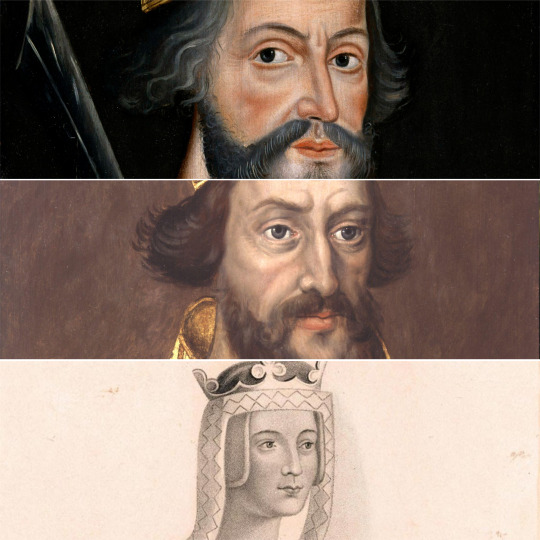
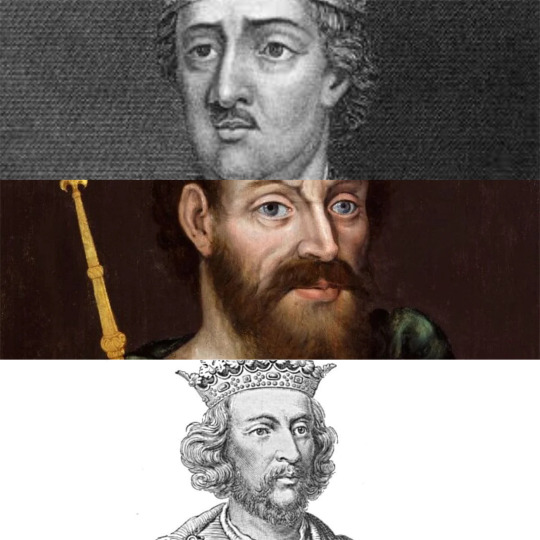

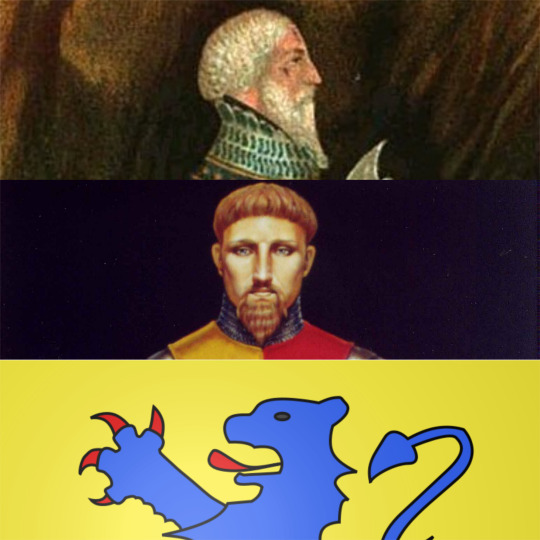


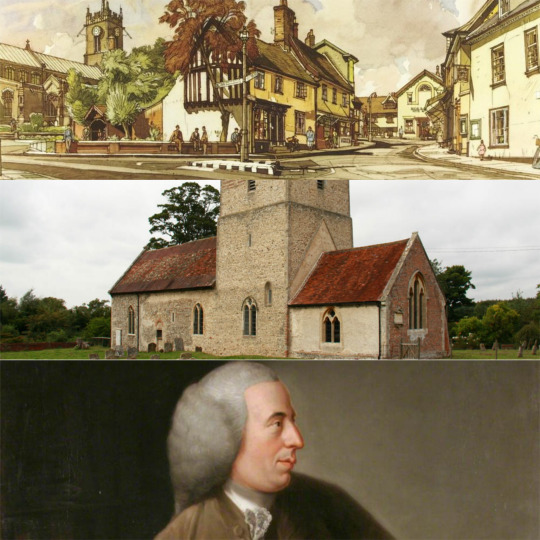
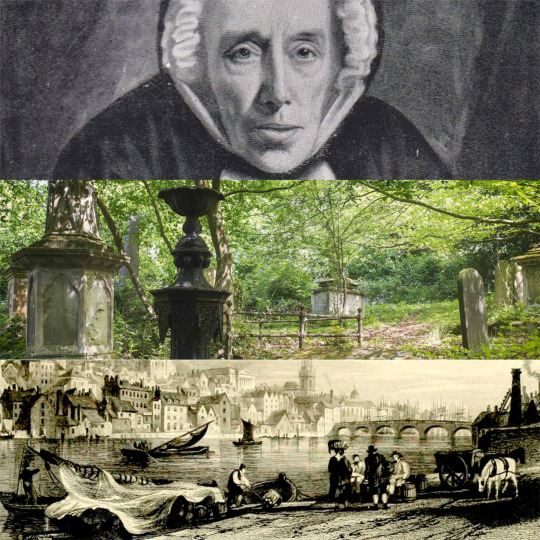
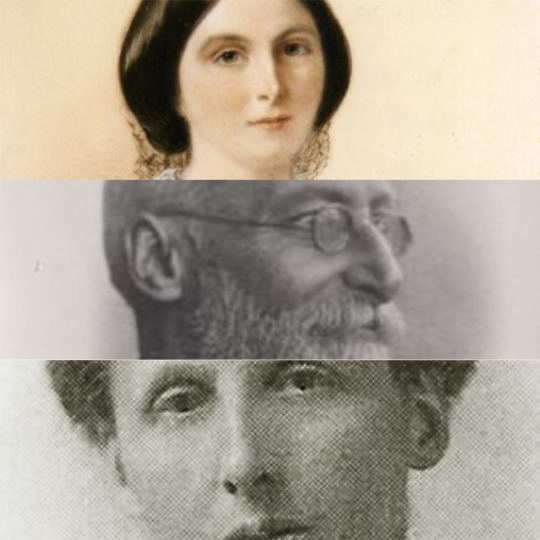

William, The Conqueror to Catherine, The Princess of Wales ⤜ The Princess of Wales is William I's 27th Great-Granddaughter via her paternal grandfather’s line.
William the Conqueror (m. Matilda of Flanders)
Henry I, King of England (m. Matilda of Scotland)
Empress Matilda (m. Geoffrey V, Count of Anjou)
Henry II, King of England (m. Eleanor of Aquitaine)
John I, King of England (m. Isabella of Angoulême)
Henry III, King of England (m. Eleanor of Provence)
Edmund, Earl of Lancaster (m. Blanche of Artois)
Henry, 3rd Earl of Leicester and Lancaster (m. Matilda de Chaworth)
Mary of Lancaster, Baroness Percy (m. Henry de Percy, 3rd Lord Percy) - Coat of Arms
Sir Henry Percy, 1st Earl of Northumberland (m. Margaret de Neville)
Sir Henry ‘Hotspur’ Percy (m. Elizabeth Mortimer)
Sir Henry Percy, 2nd Earl of Northumberland (m. Lady Eleanor Neville) - Coat of Arms
Sir Henry Percy, 3rd Earl of Northumberland (m. Eleanor, Baroness Poynings) - Coat of Arms
Lady Margaret Percy (m. Sir William Gascoigne)
Agnes Gascoigne (m. Sir Thomas Fairfax) - Gawthorpe Hall, family seat.
William Fairfax (m. Anne Baker) - Gilling Castle, family seat.
John Fairfax (m. Mary Birch) Master of the Great Hospital at Norwich, Norfolk
Rev. Benjamin Fairfax (m. Sarah Galliard), Preacher at Rumburgh, Suffolk.
Benjamin Fairfax (m. Bridget Stringer) died in Halesworth, Suffolk.
Sarah Fairfax (m. Rev. John Meadows) died in Ousedon, Suffolk.
Philip Meadows (m. Margaret Hall)
Sarah Meadows (m. Dr. David Martineau)
Thomas Martineau (m. Elizabeth Rankin) buried at Rosary Cemetery, Norwich.
Elizabeth Martineau (m. Dr. Thomas Michael Greenhow) died in Newcastle upon Tyne, Northumberland.
Frances Elizabeth Greenhow (m. Francis Lupton)
Francis Martineau Lupton (m. Harriet Albina Davis)
Olive Christina Lupton (m. Richard Noel Middleton)
Peter Francis Middleton (m. Valerie Glassborow)
Michael Francis Middleton (m. Carole Elizabeth Goldsmith)
The Princess of Wales m. The Prince of Wales
#this took wayyy to long#princess of wales#william the conqueror#history#ancestry#pictures#people#brf#british royal family#empress matilda#henry ii#henry i#john i#king of england#henry iii#hotspur#KTD
104 notes
·
View notes